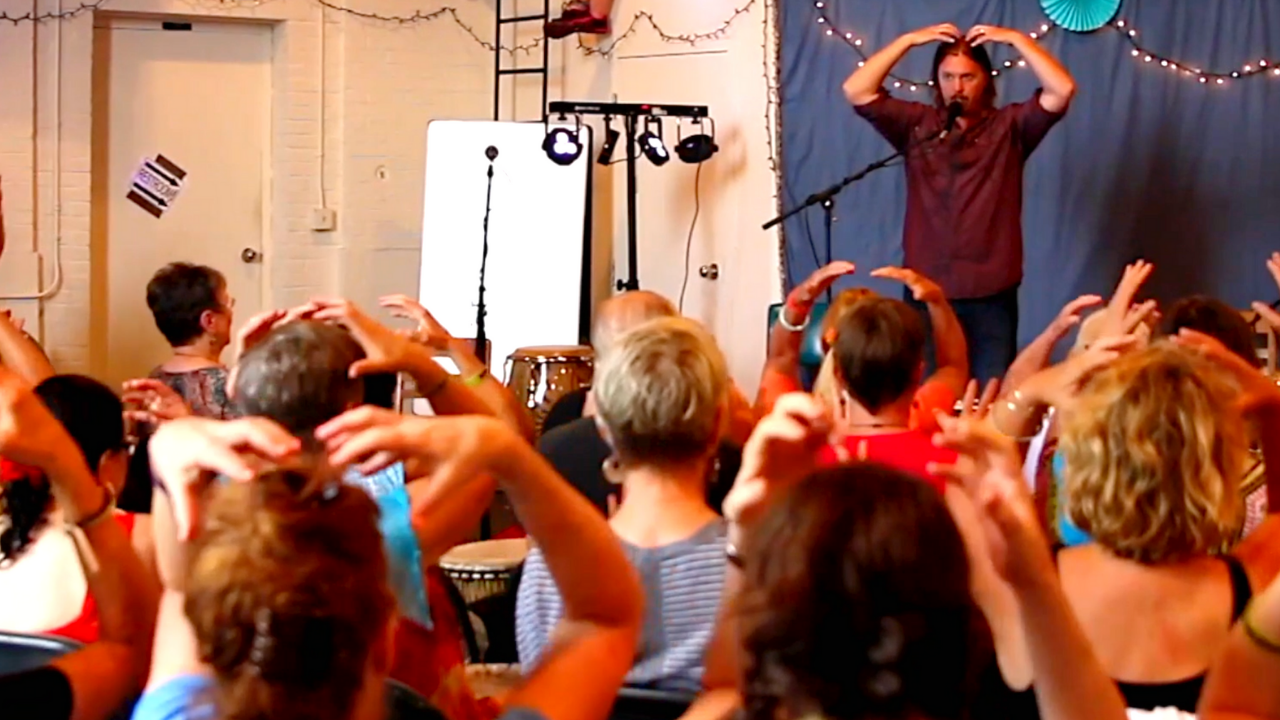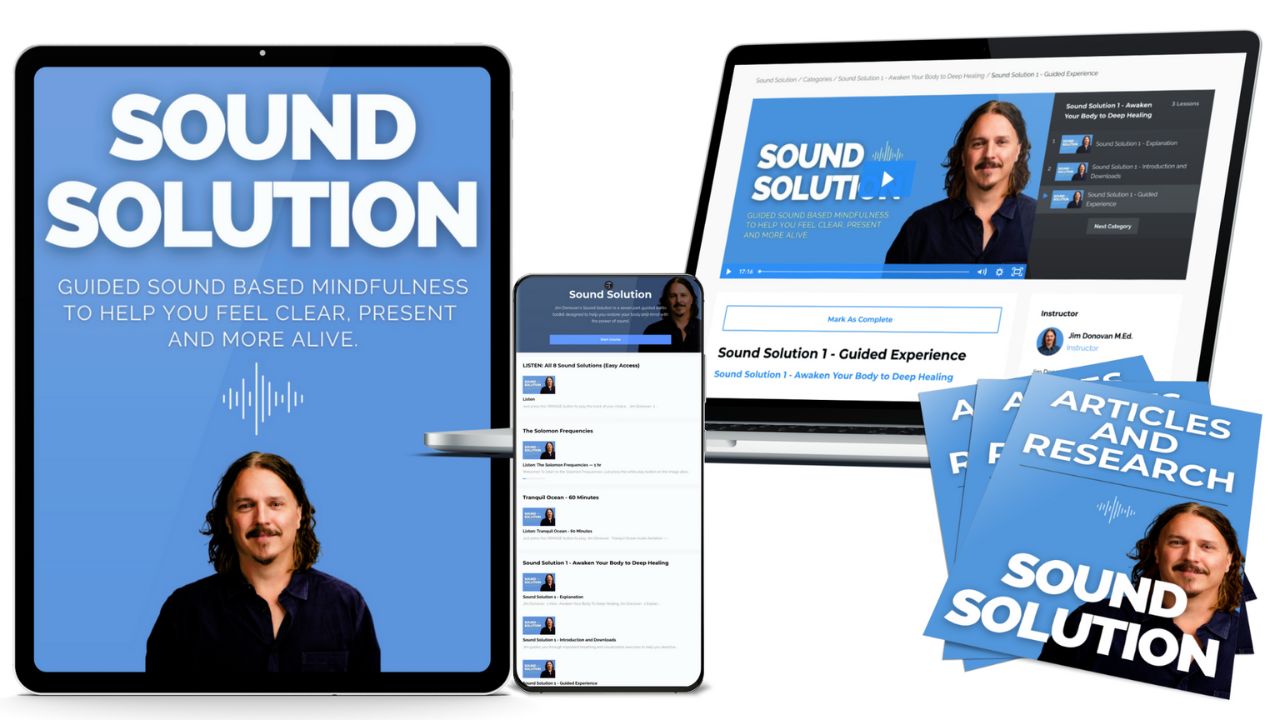What is Sound Healing?

Can Sound Be Used for Self Healing?
Despite their ancient origins, sound and vibration focused practices are finally being "rediscovered" by modern medicine and not a moment too soon!
Sound healing or "sound therapy" are general terms that, similar to the term "exercise", can refer to different things depending on the context. It’s important to understand the main variations of sound healing and how they can affect the healing process.
The latest research points to a number of ways sound healing can be helpful.
The benefits of sound healing include:
- Decrease pain
- Improve nervous system function
- Lessen symptoms of depression
- Boost mood
- Lower blood pressure
- Manage stress
- Promote deep, restorative sleep
- Reduce anxiety
- Strengthen vagal tone—a key measure of your resilience to stress
I find it helpful to put sound healing practices into two categories — active and passive.
The difference between “active” and “passive” sound healing.
Active sound healing includes practices like singing, mantra or prayer repetition and vocal toning exercises like "Brain Humming". When you produce a self-generated sound, your vocal cords vibrate. This deep inner-body vibration stimulates the vagus nerve—the longest cranial nerve in your body. This nerve runs down from your brain to your abdomen, touching all of your major organs along the way.
When you stimulate this nerve, it activates your parasympathetic nervous system. This technique is called manual vagus nerve stimulation (VNS). When this happens, your body releases the natural chemicals that make you feel calm and at ease—putting you in the optimal state for healing.
The chemicals stimulated during sound healing based vagus nerve exercises include:
- Endorphins
- Dopamine
- Oxytocin
- Nitric oxide
It’s this combination of parasympathetic nervous system activation and vagus nerve stimulation that is responsible for the “healing” part of sound healing.
A common misconception is that sound and “healing frequencies” are some sort of “magical” cure for what ails you. The truth is that your body does all of the healing.
However, by learning to use sound more efficiently, you can better prepare your body to be in its optimal healing condition.
That’s because using sound techniques on regular basis can help you learn to relax more deeply. And doing so at bedtime offers your body the best chance of doing its nightly repair work more thoroughly.
Contrary to some of the articles on sound healing out there, there is a wealth of peer-reviewed research from a variety of sources including The Journal of Alzheimer’s Disease and Frontiers in Neuroscience discussing the health benefits of sound healing — especially active sound healing practices.
In fact, I went ahead and included a full list of articles below detailing the science and health benefits of active sound healing.
These articles also include citations to the scientific journals.
The Ancient 12-Minute Technique That Can Halt Early Onset Alzheimer’s
Johns Hopkins Recommends Sound-Based Strategies for Lung Recovery
The Powerful, Built-in Bodily System You Were Never Told About
My 4-Step Daily Defense Plan for Sound Immune Support
How Vibration ‘Clears the Path’ To Better Memory
The Secret Behind Sound’s Healing Powers
What is "passive" sound healing?
Passive Sound Healing activities like sound baths are based on a 6,000 year-old ancient Asian practice that can be a deeply immersive, whole-body listening experience.
If you’re unfamiliar with sound baths, here’s what you can typically expect…
You will start by either sitting comfortably or laying down on a blanket and closing your eyes (if you prefer).
A facilitator will typically stand at the front of the room and guide you through some deep breathing exercises.
Then, they’ll softly start to play repetitive notes on a variety of soothing instruments—gongs, crystal sound bowls, chimes, harps, bells, cymbals, and didgeridoos—each of which possess their own powerful vibrational frequency.
Some facilitators also walk throughout the room, playing certain instruments near or above you to encourage deeper benefits and a more powerful experience.
The sounds of these instruments will reverberate throughout the room and your body, inducing a deep state of relaxation and bringing your focus away from your thoughts. The vibrations can feel like they’re enrapturing you, hence why it’s called a “bath.”
Skilled facilitators understand that a key purpose of a sound bath is to use vibration and a relaxing environment to elicit a person’s relaxation response (parasympathetic nervous system activation).
A person’s reaction to a sound bath can vary depending on a variety of factors:
- The competency of the practitioner.
- Their personal tolerance for certain sound frequencies.
- The perceived safety of the immediate environment where the event is taking place.
- The participant’s willingness to have the experience.
Regardless of what method you’re most drawn to, I want to encourage you to experience how good sound can help you feel for yourself.
Here’s one of my very best sound healing exercises that you can try for free. Simply click here.
Why miss out on a single article when you can get them delivered straight to your inbox for free?
Would You Like Guided Help Healing with Sound?
Try my Sound Solution Guided Audio Bundle!
Jim Donovan's Sound Solution is a seven part guided audio toolkit designed to get you started with sound based vagus nerve stimulation.
Recommended Reading
Introduction to Healing with Sound: A Comprehensive Guide Discover the power of healing with sound! This comprehensive guide teaches you how to effectively use sound therapy to restore balance and health.
Healing the Body with Frequencies: The Basics Explained
Discover the secrets of healing your body with frequencies! This guide covers the basics of frequency healing and how to use it for better health and wellness.
Benefits of Vagus Nerve Exercises & 7 Simple Practices
Harness the power of the Vagus Nerve to improve health and wellbeing in a few simple steps! Discover what exercises you need to do, and why they are important.
Vagus Nerve Exercises for Stress and Anxiety Relief
Vagus Nerve exercises have been shown to ease stress and anxiety. Discover what the vagus nerve does, the latest research, and eight free vagus nerve exercises.
Music Healing for Stress, Anxiety and Pain
Music has been used as an effective tool to help people cope with anxiety, pain, stress, and more. Discover research and 7 tips for how music healing works.
Stimulating the Vagus Nerve for Better Sleep, Stress Relief & Health
The vagus nerve has been shown to be effective in treating insomnia, stress relief, anxiety, and mood. Learn 12 easy exercises for stimulation of vagus nerve.
What is Brain Humming? Brain Humming is an easy way to clear your mind and boost your mood using the power of sound. It’s also a great stress reliever. Beginner friendly tutorial.
FDA Compliance: The information on this website has not been evaluated by the Food & Drug Administration or any other medical body. We do not aim to diagnose, treat, cure or prevent any illness or disease. Information is shared for educational purposes only. You must consult your doctor before acting on any content on this website, especially if you are pregnant, nursing, taking medication, or have a medical condition.
The material provided on this site is for educational purposes only and any recommendations are not intended to replace the advice of your physician. You are encouraged to seek advice from a competent medical professional regarding the applicability of any recommendations with regard to your symptoms or condition.
Copyright © 2021-2022 by Blue Beat Media. Thank you for your interest in Jim Donovan / Jim Donovan Music. We do not allow republication of our full newsletters and articles. However, you can post a portion (no more than 90 words, 1-2 paragraphs) of our content with a live link back to our homepage, donovanhealth.com, or a link to the specific article you are quoting from.
Jim Donovan M.Ed. is a multi-platinum musician, educator and TEDx speaker. His mission is to share the restorative power of music through education and performance. He is also an Assistant Professor and Director of Music and Wellness at Saint Francis University.
His viral TEDx Talk "How to Trick Your Brain Into Falling Asleep" has been viewed over 6 million times to date.
Learn more: https://www.donovanhealth.com/



